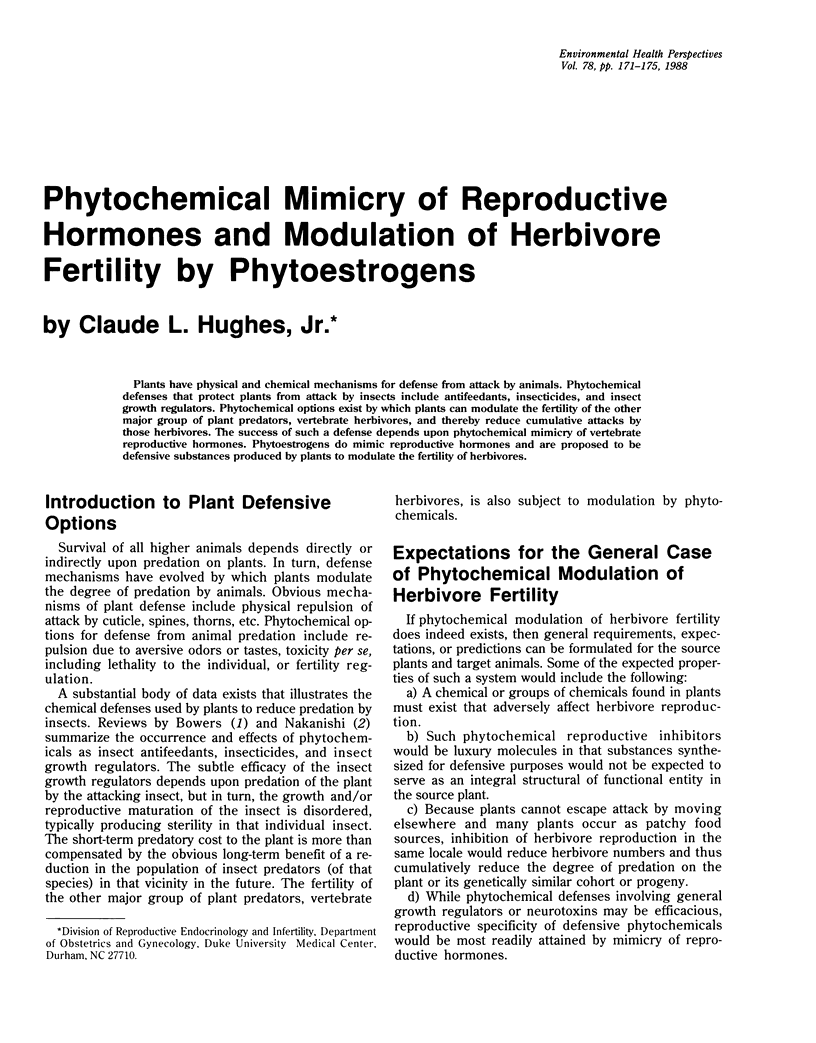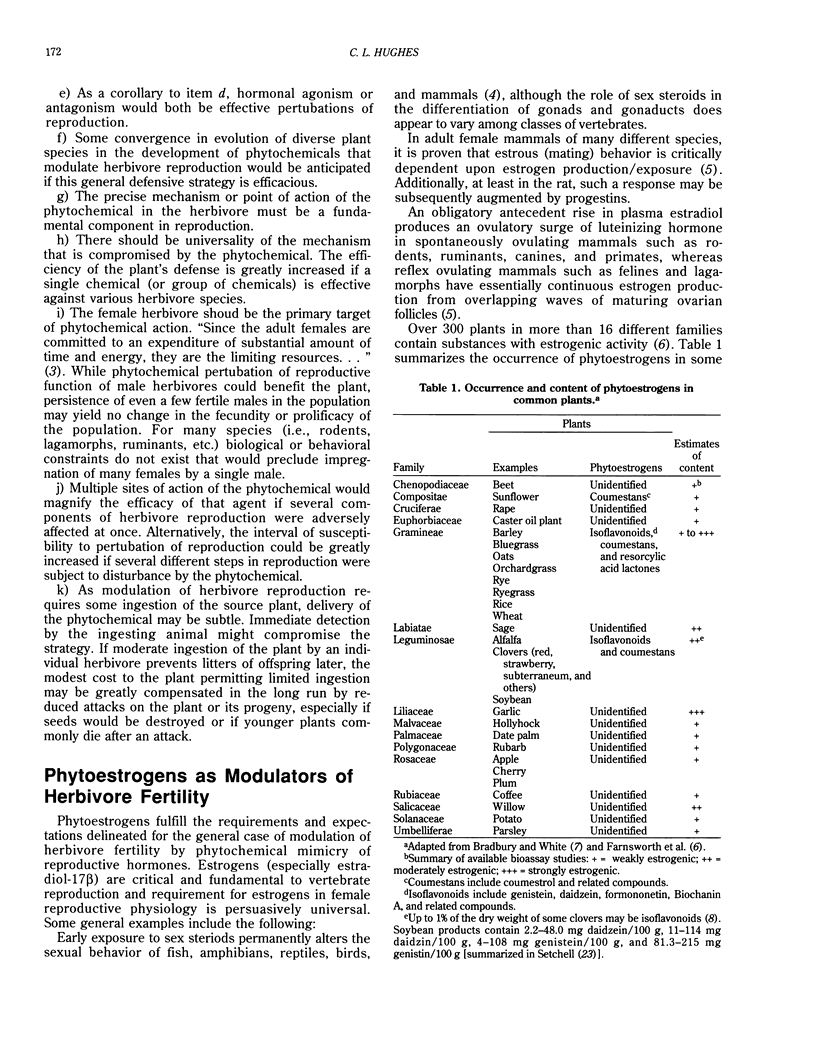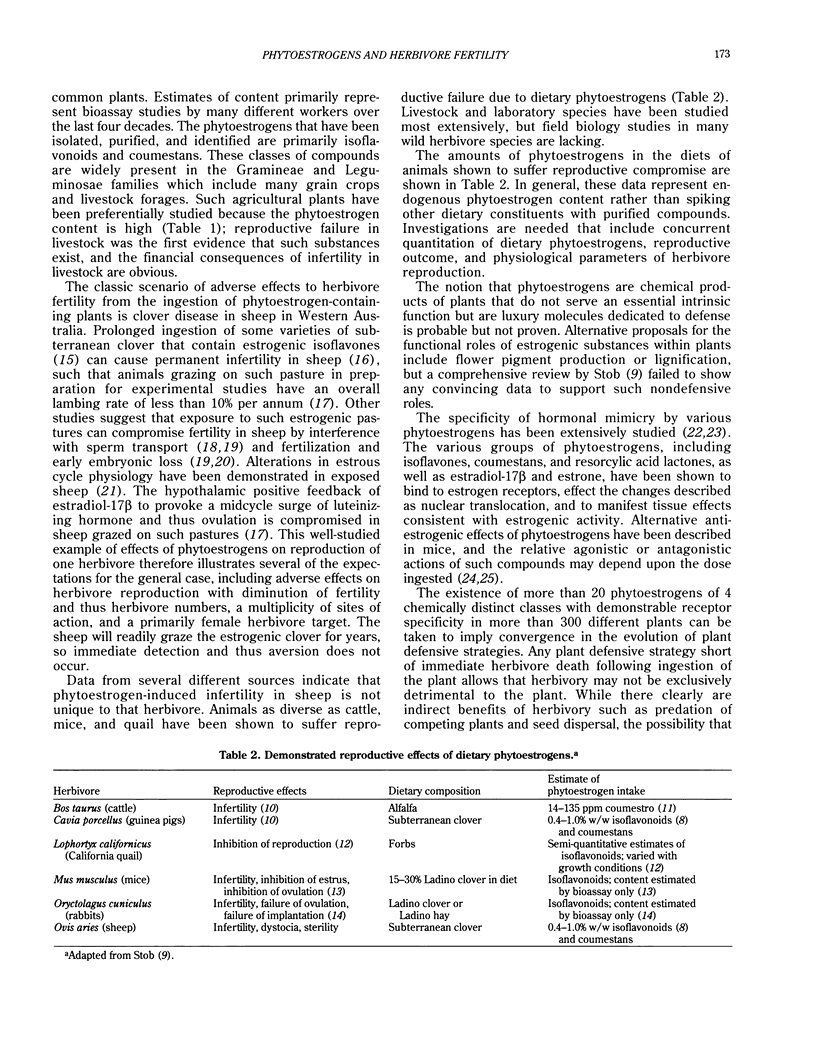Abstract
Plants have physical and chemical mechanisms for defense from attack by animals. Phytochemical defenses that protect plants from attack by insects include antifeedants, insecticides, and insect growth regulators. Phytochemical options exist by which plants can modulate the fertility of the other major group of plant predators, vertebrate herbivores, and thereby reduce cumulative attacks by those herbivores. The success of such a defense depends upon phytochemical mimicry of vertebrate reproductive hormones. Phytoestrogens do mimic reproductive hormones and are proposed to be defensive substances produced by plants to modulate the fertility of herbivores.
Full text
PDF



Selected References
These references are in PubMed. This may not be the complete list of references from this article.
- BRADBURY R. B., WHITE D. E. Estrogens and related substances in plants. Vitam Horm. 1954;12:207–233. doi: 10.1016/s0083-6729(08)61013-4. [DOI] [PubMed] [Google Scholar]
- Farnsworth N. R., Bingel A. S., Cordell G. A., Crane F. A., Fong H. S. Potential value of plants as sources of new antifertility agents II. J Pharm Sci. 1975 May;64(5):717–754. doi: 10.1002/jps.2600640504. [DOI] [PubMed] [Google Scholar]
- Findlay J. K., Buckmaster J. M., Chamley W. A., Cumming I. A., Hearnshaw H., Goding J. R. Release of luteinizing hormone by oestradiol-17 and a gonadotrophin-releasing hormone in ewes affected with clover disease. Neuroendocrinology. 1973;11(1):57–66. doi: 10.1159/000122118. [DOI] [PubMed] [Google Scholar]
- Folman Y., Pope G. S. The interaction in the immature mouse of potent oestrogens with coumestrol, genistein and other utero-vaginotrophic compounds of low potency. J Endocrinol. 1966 Feb;34(2):215–225. doi: 10.1677/joe.0.0340215. [DOI] [PubMed] [Google Scholar]
- Hearnshaw H., Brown J. M., Cumming I. A., Goding J. R., Nairn M. Endocrinological and histopathological aspects of the infertility in the ewe caused by oetrogenic clover. J Reprod Fertil. 1972 Jan;28(1):160–161. doi: 10.1530/jrf.0.0280160. [DOI] [PubMed] [Google Scholar]
- LEAVITT W. W., WRIGHT P. A. EFFECTS OF LEGUMES ON REPRODUCTION IN MICE. J Reprod Fertil. 1963 Aug;6:115–123. doi: 10.1530/jrf.0.0060115. [DOI] [PubMed] [Google Scholar]
- Leavitt W. W., Wright P. A. The plant estrogen, coumestrol, as an agent affecting hypophysial gonadotropic function. J Exp Zool. 1965 Dec;160(3):319–327. doi: 10.1002/jez.1401600309. [DOI] [PubMed] [Google Scholar]
- Montgomery G. W., Martin G. B., Le Bars J., Pelletier J. Gonadotrophin release in ovariectomized ewes fed different amounts of coumestrol. J Reprod Fertil. 1985 Mar;73(2):457–463. doi: 10.1530/jrf.0.0730457. [DOI] [PubMed] [Google Scholar]
- WRIGHT P. A. Infertility in rabbits induced by feeding Ladino clover. Proc Soc Exp Biol Med. 1960 Nov;105:428–430. doi: 10.3181/00379727-105-26129. [DOI] [PubMed] [Google Scholar]


